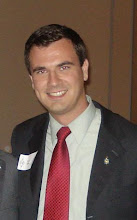 Who doesn’t love Disney? If you were at the Magical Music of Disney concert on July 16th or 17th you know that not too many people don’t. Mary Poppins, Aladdin, The Little Mermaid? You can probably hum a lot of those tunes without even thinking about it. I will even go out on a branch and admit that I’ve played a lot of them in band during my high school and college days. The vast spectrum of appreciation was reflected in the diversity of the audience - I have never seen such a range of people at the Strathmore! There were all ages and types of people enjoying music that is truly timeless.
Who doesn’t love Disney? If you were at the Magical Music of Disney concert on July 16th or 17th you know that not too many people don’t. Mary Poppins, Aladdin, The Little Mermaid? You can probably hum a lot of those tunes without even thinking about it. I will even go out on a branch and admit that I’ve played a lot of them in band during my high school and college days. The vast spectrum of appreciation was reflected in the diversity of the audience - I have never seen such a range of people at the Strathmore! There were all ages and types of people enjoying music that is truly timeless.Although it sounds odd, I hope a lot of those people were not regulars to the Strathmore and the Baltimore Symphony Orchestra. I think a lot of cultural organizations fall into somewhat of a rut at times, as they tend to draw the same audience over and over again. It’s obviously great to be a repeat patron, but part of the mission of a symphony orchestra should also be to expose as many people as possible to the joys of music. As I was looking around last Thursday night at all the young people (in some cases very young people) in the audience, I was glad to see so many being exposed to great music at such a young age. Hopefully, those children will start building memories around those great tunes that same way that so many previous generations have. The movies of Walt Disney, and the excellent music that always accompanies them, have become part of our culture and I sure hope it stays a part. A large chunk of that audience was not alive when Julie Andrews sang in Mary Poppins (I wasn’t), and many probably weren’t even alive when The Little Mermaid made such a splash in the late 1980’s, but they definitely seemed to know the music. Through great summer programs like this one (and through the magical marketing of Disney), this great music will hopefully be passed down for years to come.
 Another magical moment that I had at this concert was when it dawned on me that I was able to follow along with the movie just by hearing the music. Over the orchestra, a giant projection screen was showing stills or clips from the movie that the music was selected from. Outside of the orchestra, there was no sound or dialogue attached to the films and photos. Hearing the music while also seeing these silent clips of the movie reminded me how much of a story music really can tell on its own. Through the emotion in the music you are able to figure out who the bad guys are, when things are going well for the hero, and when love is in the air. Additionally, I was reminded of how much a movie would lose if you stripped away its musical component. Most people out there could probably hum at least a few bars from The Lion King, and probably even sing the songs, but do you really know more than just a random quote or two from the non-musical dialogue? A movie without music, like a world without Disney, would truly be a good bit less magical.
Another magical moment that I had at this concert was when it dawned on me that I was able to follow along with the movie just by hearing the music. Over the orchestra, a giant projection screen was showing stills or clips from the movie that the music was selected from. Outside of the orchestra, there was no sound or dialogue attached to the films and photos. Hearing the music while also seeing these silent clips of the movie reminded me how much of a story music really can tell on its own. Through the emotion in the music you are able to figure out who the bad guys are, when things are going well for the hero, and when love is in the air. Additionally, I was reminded of how much a movie would lose if you stripped away its musical component. Most people out there could probably hum at least a few bars from The Lion King, and probably even sing the songs, but do you really know more than just a random quote or two from the non-musical dialogue? A movie without music, like a world without Disney, would truly be a good bit less magical.




